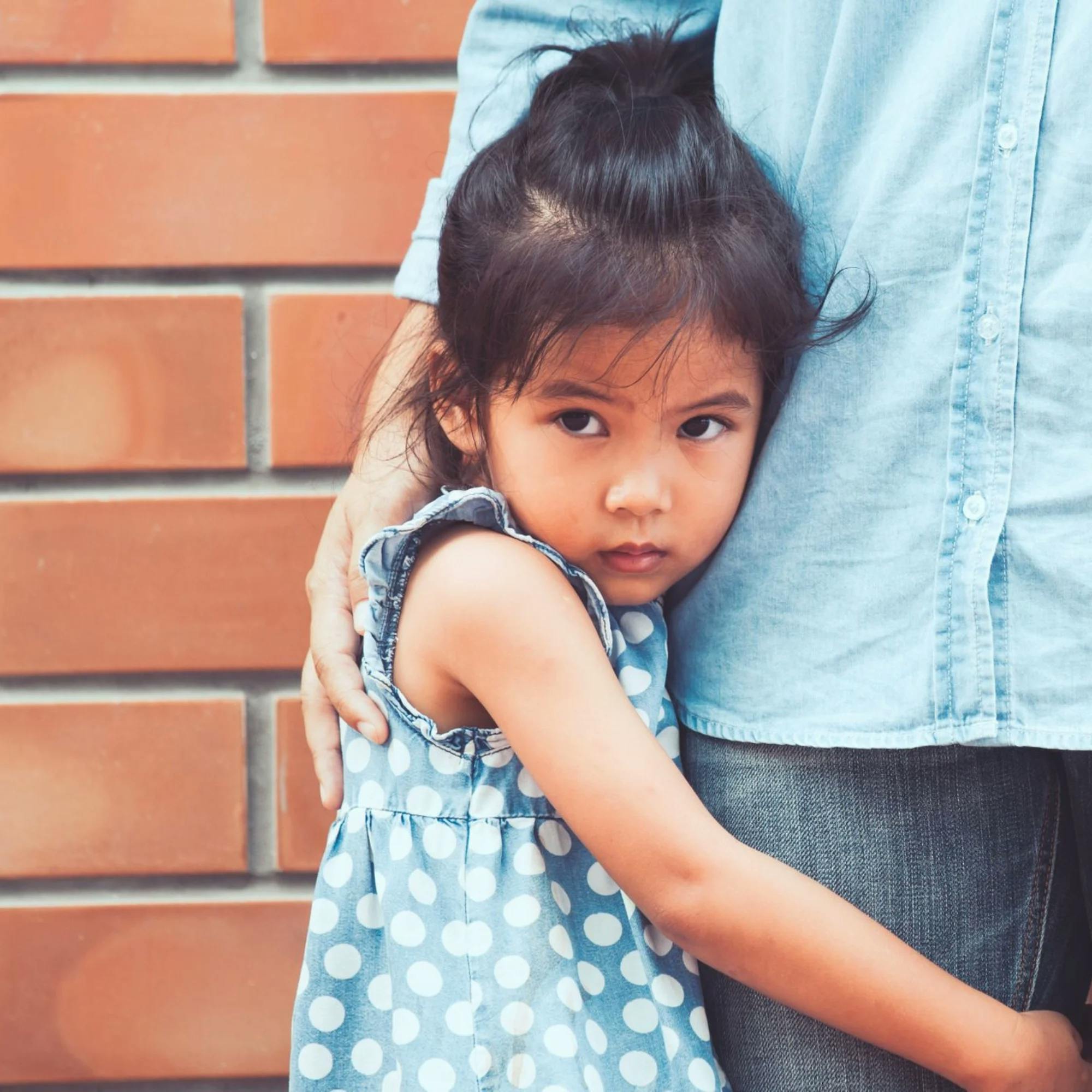As parents and caregivers, we’re role models for our children in many ways. That includes helping them recognize and process their feelings, and giving them a safe space to express how they feel. Kids need the adults in their lives to teach them how to work through their emotions. An important way you can do this is by responding to your child with empathy.
Empathy is the ability to identify and share the feelings of another person. When we adults are frustrated, stressed, or happy, we often want to share that feeling with someone else. Kids are the same way. And when you respond to your child with empathy, they feel connected to you, and they learn how to show empathy to others as well.
Here’s how to use empathy with your child and teach them to express their emotions in a healthy way.

Why use empathy with your child?
Showing empathy to your child can help you build a healthy, secure relationship with them. It also improves your child’s own emotional development. There are lots of benefits for your child, such as:
Being better able to regulate their emotions
Having a better understanding of other people’s feelings
Having a good sense of self-esteem
More motivation in school
The ability to make and keep friends
A lower risk of behavioral issues
A lower risk of anxiety
Children whose emotional needs are met are better able to empathize with others as they get older. They’re more likely to recognize others’ feelings and offer to help. By modeling and teaching empathy to your child, you’re setting them up for success in their emotional intelligence and relationships with others.


4 ways to use empathy with your child
Let’s review some ways that you can respond to your child with empathy.
1 Listen to your child
The easiest way you can show empathy is by listening to your child. When you take the time to simply be quiet and focus your attention on them, it shows your child that how they feel matters.
As your child talks, try not to interrupt or rush them. And if they just need to cry, sit with them through it! Your presence will help them feel supported.
2 Use reflective statements
When you’re talking with your child, reflect what they’re saying or communicating to let them know you hear them. Let’s say they’re crying because their toy broke. You can say, “I can see you're really upset about your broken toy.” Then pause to see how they respond. Starting off with a reflective statement should help prompt your child to talk about how they feel.


3 Ask your child questions
Let your child know that you’re interested in what they have to say. Ask questions like “Can you tell me more about this?,” “What can I do?,” or “What do you need from me?” This gives your child the chance to explain the situation more clearly or tell you what they need.
You can also ask questions to make sure you understand correctly. This will help decrease any frustration from misunderstandings. It’s important to get all the information before you jump in to start fixing what’s wrong.
4 Affirm your child’s feelings
Just like adults, children want to know that others see and value their feelings. We may already recognize their feelings are valid, but we have to let them know with our words!
Let’s say your child is nervous about joining a team or starting a new class. You can say something like, “It can be a little scary to start something new,” or “I understand why you feel nervous.” Simple statements like this can go a long way in making your child feel validated and understood.
If your child is upset about something that doesn’t seem like a problem to you, try to recognize that it’s a big deal to them. Do your best to see things from their perspective.


How to help your child express their feelings
What if your child has a hard time expressing their emotions, or doesn’t always do so in an effective way? Helping children communicate how they feel can decrease frustration and cut down on behavior problems. It also improves their emotional well-being.
Strong feelings are a natural part of life. But how we interpret, express, and respond to these feelings is important. All these skills start in the early years of childhood.
How we interpret and express feelings is important. These skills start in the early years of childhood.
In order for children to learn how to express and process their emotions, they first have to learn what each emotion is called. Use these tips to teach your child the names of emotions.


In-the-moment teaching
When your child is experiencing a pleasant emotion, like happiness or excitement, take the time to say the name of the emotion and explain it. Here’s an example: “You seem happy! I see that you’re smiling. You look happy to be going to the park!” Repeat the name of the emotion a few times. Try to do this throughout your child’s daily routine.
If your child is feeling sad or angry, you should name these emotions as well. However, when your child is upset, they may be less likely to listen to and absorb what you’re saying. It may be better to wait until your child has calmed down before reflecting on how they felt.
You can also talk with your child privately if you’re out in public and witness another child feeling upset. Or you can point out how characters in your child’s favorite books or movies are feeling. Both of these examples can help ensure you keep your child's attention.

Parent modeling
As you experience different feelings throughout the day, name them for your child. You can say things such as, “I’m so excited we’re going to play outside!” or “I’m sad the rain is keeping us from going to the playground.” Make sure to use facial expressions, such as a smile or a slight frown, to further communicate these feelings to your child.
Making faces in the mirror
One activity your child will love is making facial expressions for specific emotions in the mirror. Practice making faces for the feelings happy, sad, angry, scared, and excited. Name the emotion for your child as you make the face. Once they've made some progress, spend time asking your child to label the emotion themselves.
Using pictures to help your child express their emotions
If your child isn’t yet consistently using words to express their wants and needs, they may benefit from using pictures instead. Here’s an easy idea: Color a yellow smiley face, blue frowny face, and red angry face on individual pieces of paper. Use these pictures to teach and express emotions to your child. Make sure your child can easily access these pictures throughout the day. If you notice your child experiencing a strong emotion, you can tell them, “Show me how you’re feeling” and prompt them to use the pictures. Over time your child should begin to point to the picture that matches their feeling all by themselves.
Your child should begin to point to the picture that matches their feeling all by themselves.
Feel free to have some fun with this activity. Instead of coloring pictures, you could take pictures of yourself or your child making facial expressions for different emotions. This will make the task more personal and relatable for your child. An actual photo also depicts emotions much better than a picture.
The time you put into helping your child understand and express their emotions, and responding to them with empathy, will go a long way. These early years are crucial for emotional development. When you help your child in this way, they’re more likely to grow into emotionally healthy adults. This leads to better relationships with others. As their caregiver, there’s a lot you can do to help them get there.
How Expressable Can Help
Concerned your child isn't reaching age-expected milestones? Looking for communication support from a professional? Expressable is a national online speech therapy practice serving children and adults. We treat all major areas of communication and feeding, offer flexible hours including evenings and weekends, and accept most major health insurance plans. We’re proud to have earned more than 3,000 5-star reviews from our clients (4.9/5 average).
Our therapy model is centered on parent and caregiver involvement. Research proves that empowering caregivers to participate in their loved one’s therapy leads to better outcomes. That’s why we combine live, 1-on-1 speech therapy with personalized education and home practice activities for faster progress.
Communication is more than words. It’s how we share how we feel and show who we are. We’re here to help you or your child do just that.
 Abby Barnes, M.S., CCC-SLP
Abby Barnes, M.S., CCC-SLP





